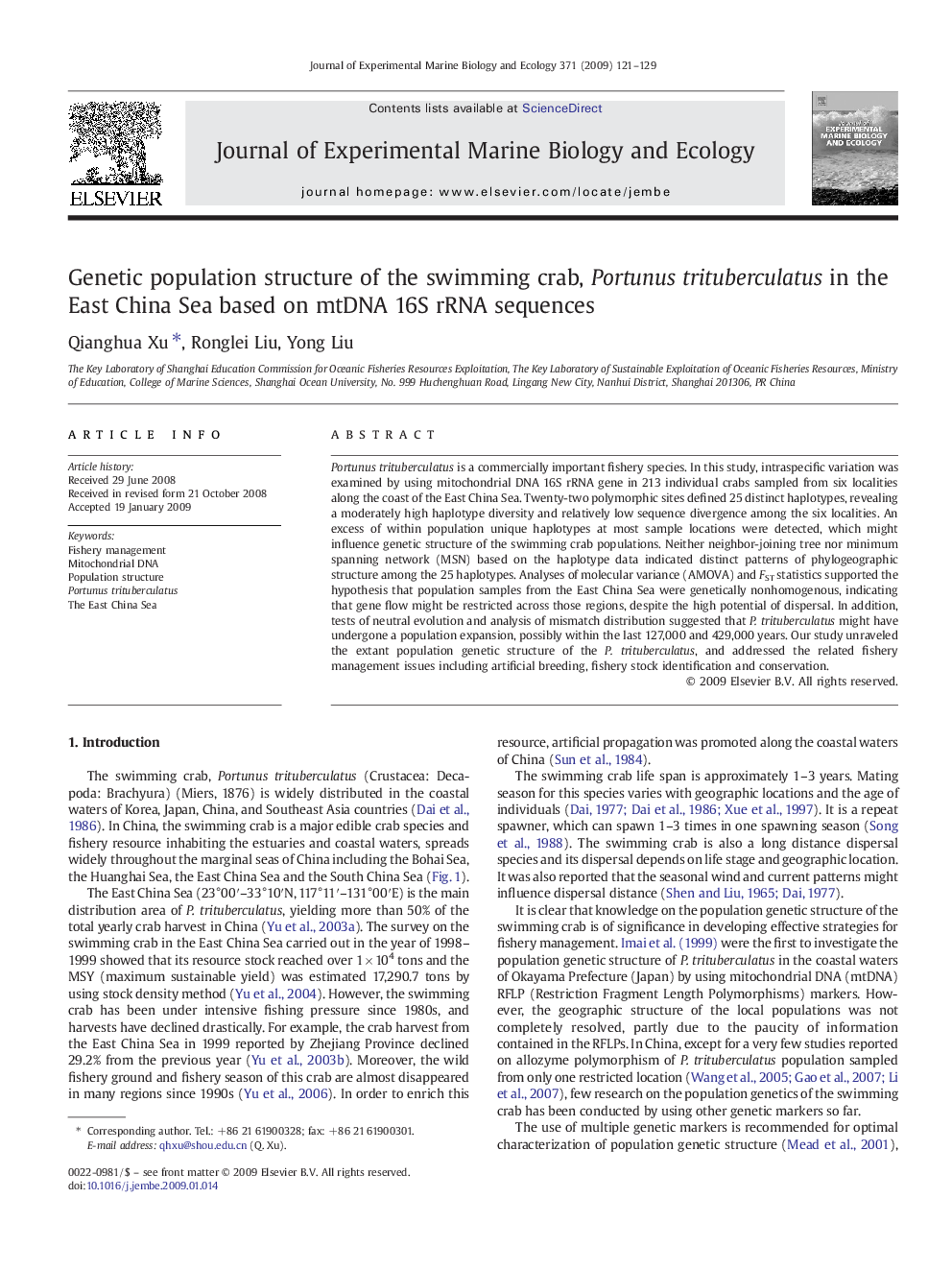| Article ID | Journal | Published Year | Pages | File Type |
|---|---|---|---|---|
| 4396900 | Journal of Experimental Marine Biology and Ecology | 2009 | 9 Pages |
Portunus trituberculatus is a commercially important fishery species. In this study, intraspecific variation was examined by using mitochondrial DNA 16S rRNA gene in 213 individual crabs sampled from six localities along the coast of the East China Sea. Twenty-two polymorphic sites defined 25 distinct haplotypes, revealing a moderately high haplotype diversity and relatively low sequence divergence among the six localities. An excess of within population unique haplotypes at most sample locations were detected, which might influence genetic structure of the swimming crab populations. Neither neighbor-joining tree nor minimum spanning network (MSN) based on the haplotype data indicated distinct patterns of phylogeographic structure among the 25 haplotypes. Analyses of molecular variance (AMOVA) and FST statistics supported the hypothesis that population samples from the East China Sea were genetically nonhomogenous, indicating that gene flow might be restricted across those regions, despite the high potential of dispersal. In addition, tests of neutral evolution and analysis of mismatch distribution suggested that P. trituberculatus might have undergone a population expansion, possibly within the last 127,000 and 429,000 years. Our study unraveled the extant population genetic structure of the P. trituberculatus, and addressed the related fishery management issues including artificial breeding, fishery stock identification and conservation.
